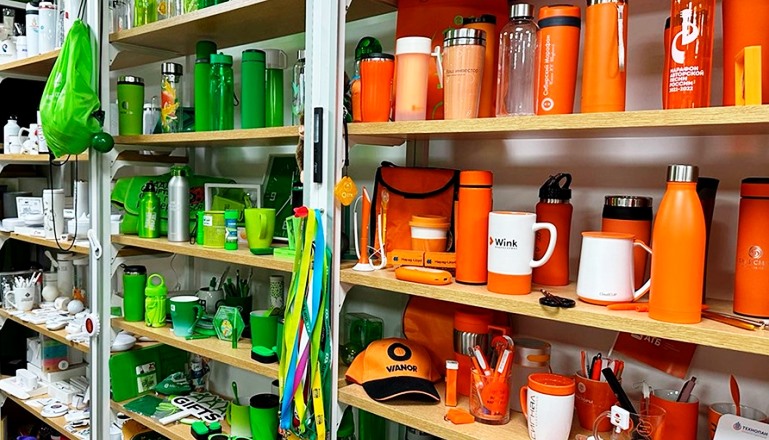At a certain point, numbers start to lose meaning. The human mind is bad at processing large numbers and the vastness of large numbers, and what they represent becomes too fuzzy and blurry for us to comprehend. This is one of the reasons why guessing how many jelly beans are in a jar is such a reliable game. People will get large numbers very wrong. But there are tons of stuff around us all the time, not just jelly beans. And many things exist in surprising quantities.
10. Beetles make up about a quarter of all identified life on Earth.

In 2011, scientists estimated that there were about 8.7 million different species on Earth. Of those, about 1.5 million species have been identified and named. And of those, beetles make up 25%. That means that out of the 1.5 million species, between 350,000 and 400,000 are just beetles.
From an evolutionary perspective, this makes sense. Most beetle species have been around since the Jurassic period, meaning they have succeeded in part because they are so adaptable and well suited to living in any environment. They have, so to speak, hit the evolutionary jackpot.
9. There are over 120,000 types of rice.

You can make a strong case that rice is the most popular food in the world. In 2021/2022, 520 million metric tons of rice were consumed worldwide. Americans eat about 20 pounds of rice per person each year. If that seems like a lot, compare it to Asia, where the average person eats 220 pounds per year. So rice is eaten a lot, that goes without saying. But the sheer variety of rice is even more remarkable.
Most of us are familiar with foods like Arborio rice, Jasmine rice, Basmati rice, and a few others. However, there are over 120,000 varieties of rice in the world. The International Rice Genebank contains the genetic material of 132,000 different rice varieties and related genera. This means that you could eat a new variety of rice every day for over 360 years. If you wanted to fit all of that into your life, you would probably need to try about 6 different varieties a day, then you would only need to work for 60 years.
8. Sign language is not universal, there are hundreds of variations

Communication is the cornerstone of civilization, and there are over 7,000 spoken languages in the world. This means that sometimes communication can be difficult if we are not all on the same page.
Some people may think that this is not as important for people with hearing loss, since sign language can bridge this international language gap, allowing people from any culture to communicate, but this is not the case. Although not as diverse as spoken languages, there are still over 300 types of sign language used around the world.
Interestingly, the differences in sign language do not follow the lines of spoken language. American Sign Language differs from Auslan Sign Language in Australia and British Sign Language in the UK, although verbal communication in these three places is largely in the same language.
7. There are more than 1800 types of cheese.

If you're a cheese lover, you probably already know and enjoy the abundance of varieties. Most grocery stores will offer dozens of varieties, from cheddar to Emmental, Gouda, Havarti, and more. But even specialty cheese shops that carry hundreds of varieties don't tell the whole story. There are more than 1,800 varieties found worldwide.
You can search for them in databases by country of origin, the milk used to make them, or even the texture of the finished product.
6. There are about 7,500 varieties of apples.

Google “best apples for pie” and you’ll find a ton of articles offering dozens of different options. This has probably been an ongoing debate since apple pie was invented. There are a ton of options that people choose for different reasons, from sweetness to tartness to firmness and more. But in all of these articles, you’ll probably find, at most, a few dozen different apples. And that’s a little odd, considering there are actually 7,500 different varieties of apples.
Of course, most of us don’t know more than a couple dozen, which is why the selection is so limited, even though 2,500 of those many apples are grown in the U.S. alone. Consumers are simply used to a limited selection, and introducing new ones usually takes time and some marketing before people get on board. Also, while America grows a huge variety of apples, many of them are grown only in limited areas or on small farms, so the entire supply of seconds can be extremely limited. Without large farms to make room for new crops, most people will probably never get to try them.
5. There are more than 30 types of screwdrivers

Have you ever been working on a project with someone and they ask you for a screwdriver? And then you have to go, what type of screwdriver do they mean? Some of them are pretty well known, like Phillips, slot, or Robertson. But what do you call a six-pointed star? That's some kind of Torx, although there are subtypes. And the ones that look like an hourglass? That's a clutch.
There are over 30 types of screws and drives in common use, although obviously some are more popular than others. Wikipedia has a page that lists most of them if you ever come across one and don't know what you're looking at.
Why so many types? Some are proprietary. Some, like Torx, prevent the cam from falling out. Tri-wing will let you apply more force. Phillips itself was designed to handle screwdrivers better than previous types.
4. There are over 350 forms of pasta

Americans eat nearly 6 billion pounds of pasta a year. It’s safe to say it’s a popular food item. And one of the fun things about pasta is that you can change the shape and change the dish, even though the ingredients are technically the same. Certain shapes of pasta are better suited to certain fillings, sauces, or dishes. Some are just plain fun to eat.
Spaghetti and macaroni are two extremely popular varieties, along with penne, rigatoni, fettuccine, and many others. How many, exactly? Over 350. You can find many of them in online databases, but they're still not exhaustive. Even the Wikipedia page on pasta doesn't cover that many, although it has more than most.
Part of the problem is that many pasta shapes are variations on previously existing ones—for example, spaghettini is just a thinner version of spaghetti. And other types get different names from region to region, so it can be hard to keep track. Not to mention new pasta shapes, like the ones you might find in jars of Scooby-Doo pasta at the grocery store.
3. There are 15 types of electrical outlets in the world.

One thing people will always tell you if you're going to travel internationally is to buy an adapter for your electronics because the plugs in Europe, Asia, or wherever you are are different. And the way it's explained makes it sound like there are two kinds of plugs in the world, and that's it. But in reality, there are about 15 types of electrical outlets in common use around the world, depending not only on where you are, but also on what the outlets are for.
In America alone, there are several types, even if we don’t always think about it. There’s the Type A with the standard two prongs, and also the Type B with a third prong for the ground wire. Both are 120V, typically. You’ll also find larger 3- and 4-prong outlets for things like clothes dryers.
When you go international, you get Type C, which is ungrounded and found in Europe, Asia, and South America and is rated for up to 240V. Type D is from India, H is from Israel, and Type L is from Italy and Chile.
2. There are 19 types of ice

If someone asked you what kind of ice you like, you'd probably tell the difference between cubed and crushed. But science recognizes 19 types of ice. The 19th type was created in a lab back in 2021. These are tetrahedral crystals that require ultra-low temperatures and very high pressure.
Various other types of ice exist in conditions that you wouldn’t find outside on a winter’s day. They can be made in labs or found in space on other worlds in extreme conditions. They require extreme temperatures and pressures, and they form different crystalline structures that distinguish them from the ice we know here on Earth. Ice 17, for example, can be made at room temperature by squeezing water between 1-nanometer-thick layers of graphene under about 10,000 atmospheres of pressure.
1. There are several types of twins.

Chances are, most people either know twins or have at least encountered twins at some point in their lives. There are fraternal and identical twins, and many parents like to make a big deal about dressing them alike or giving them the same name when they can, at least when it comes to identical twins.
Fraternal twins are also known as dizygotic twins. This occurs when two eggs are released and fertilized at the same time, so two babies grow together in the womb. Identical twins are monozygotic twins. This occurs when one fertilized egg splits into two, and essentially the same person, genetically speaking, grows in the womb twice.
However, these two types of twins are not the only ones, and it has been suggested that a number of other types of twins may also occur.
Mirror image twins occur when the egg splits late, more than a week after conception. The twins will develop as mirror images, so instead of being 100% identical, they will be identical but opposite. So a mole on the left cheek of one twin will be on the right cheek of the other.
Semi-identical twins are so rare that only two cases have been identified in the past where one egg is fertilized by two sperm. Technically, this should be impossible. But it’s not. Once fertilized, the egg splits its three sets of genetic material into two subsets, each of which develops separately. The result in one case was twins, a boy and a girl, who developed as identical twins but shared genetic material at only 84%.
Superfetation is another condition where something technically impossible still happens. In this case, a woman gets pregnant, and then gets pregnant again. Your body is supposed to prevent this naturally, but in some cases, where assisted technology was used to increase the chances of getting pregnant, the body's natural defenses against this were bypassed, and a twin pregnancy occurred. The babies aren't technically twins, but pregnancy works much the same way for obvious reasons.
Superfertilization occurs when twins are born to two different fathers. It is more common in animals, but can happen in humans if a woman releases two eggs in a short period of time and has sex with two different men to impregnate both in the same cycle. This can result in the twins looking significantly different.
In addition, other potential twin types have been proposed.













Оставить Комментарий